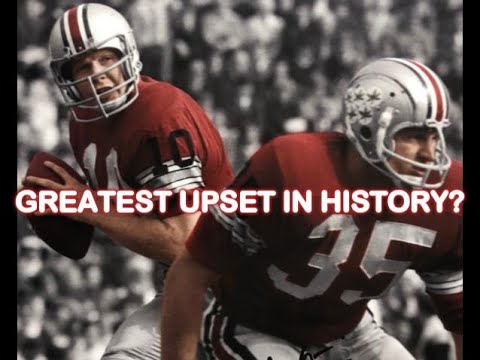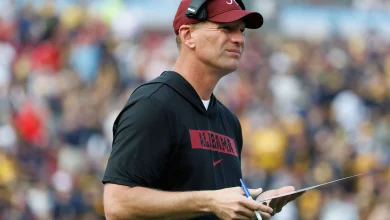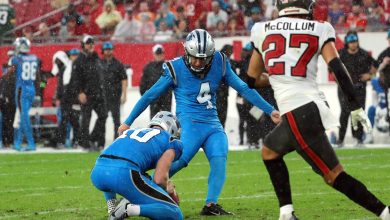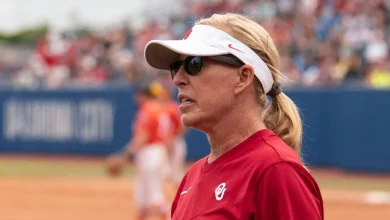In a game that will go down in history as one of the greatest upsets in college football history, the Ohio State Buckeyes stunned the college football world by defeating the Miami Hurricanes 31-to-24 in double overtime. The Buckeyes, led by sawy veteran safety Mike Doss, linebacker Matt Wilhelm, quarterback Craig Krenzel, wide receiver Michael Jenkins, and two-way star Chris Gamble, were joined by upstart freshman running back Maurice Clarett.

In a game that will go down in history as one of the greatest upsets in college football history, the Ohio State Buckeyes stunned the college football world by defeating the heavily favored Miami Hurricanes 31-24 in a dramatic double-overtime thriller. The 2003 Fiesta Bowl, which served as the BCS National Championship Game for the 2002 season, was more than just a clash of two undefeated teams—it was a collision of legacies, dominance, grit, and sheer willpower.
Ohio State entered the game as 11.5-point underdogs against a Miami team riding a 34-game winning streak, stacked with future NFL talent and the reigning national champions. Many believed the Hurricanes were poised to cruise to a second consecutive title. They were the standard of excellence in college football—an offensive juggernaut and defensive powerhouse, coached by Larry Coker and led by stars such as quarterback Ken Dorsey, running back Willis McGahee, safety Sean Taylor, and a slew of first-round picks. Yet, what unfolded under the lights in Tempe, Arizona, was nothing short of a college football miracle engineered by a resilient and determined Buckeye squad.
The Buckeyes, led by head coach Jim Tressel in only his second year at the helm, were a team that thrived on physicality, discipline, and opportunism. They were not flashy, and their wins throughout the season had often been gritty, close, and unspectacular. But they were wins nonetheless, culminating in a perfect 13-0 record coming into the championship game. Ohio State’s path to the title was shaped by a core of experienced leaders and emerging young stars, each of whom would play a crucial role in their stunning victory.
Among them was senior safety Mike Doss, a three-time All-American and the heart of the Buckeyes’ defense. Doss had made the surprising decision to return for his senior season, vowing to help lead his team to a national title. Alongside him was middle linebacker Matt Wilhelm, a tackling machine and vocal leader, whose presence anchored the defensive front. On the offensive side of the ball, quarterback Craig Krenzel, known more for his intelligence and toughness than raw talent, had emerged as the steady hand guiding the offense. Wide receiver Michael Jenkins, his favorite target, had developed a knack for making crucial plays in clutch moments. And then there was Chris Gamble, the dynamic two-way player who rarely left the field, contributing as a cornerback, wide receiver, and return man.
But perhaps the biggest spark came from a true freshman: Maurice Clarett. The 18-year-old running back from Youngstown, Ohio, had captured national attention early in the season with his aggressive running style, football instincts, and maturity beyond his years. Despite battling injuries and controversy during the season, Clarett was a game-changer—fast, powerful, and unafraid of the moment. His performance in the championship game would cement his place in Buckeye lore.
From the opening whistle, it was clear that Ohio State was not intimidated. Their defense, relentless and swarming, harassed Dorsey throughout the night, pressuring the Heisman finalist into rushed throws and preventing Miami from finding a rhythm. The Buckeyes forced turnovers, including a crucial interception by cornerback Dustin Fox and a strip of Miami tight end Kellen Winslow II by Clarett himself—an iconic moment where the freshman snatched the ball out of Winslow’s hands after a Miami interception, reversing the momentum and setting up an Ohio State field goal.
Offensively, Ohio State was methodical. Krenzel scrambled for key first downs and managed the game with poise. Clarett ran hard between the tackles, punishing Miami’s vaunted defense and keeping them honest. Jenkins made a pivotal 57-yard catch late in the game that set up a Clarett touchdown run. Each Buckeye drive was a study in resilience, and each play seemed to chip away at the myth of Miami’s invincibility.
The game was a seesaw battle that reached a fever pitch in the fourth quarter. Miami, trailing late, tied the game at 17-17 with under two minutes remaining on a field goal. Overtime was a fitting next chapter in this epic clash.
In the first overtime, Miami struck first. Dorsey connected with tight end Kellen Winslow II, and the Hurricanes appeared to have regained control. On Ohio State’s turn, Krenzel faced fourth-and-3 at the Miami 5-yard line. The play that followed became one of the most controversial in college football history. Krenzel’s pass to Gamble fell incomplete, and the Hurricanes began to celebrate their apparent victory. But a late flag for pass interference on Miami’s Glenn Sharpe gave the Buckeyes new life. The call, debated endlessly for years, gave Ohio State a fresh set of downs. On the next play, Krenzel ran in for a touchdown to tie the game at 24-24 and force a second overtime.
Riding the wave of emotion, Ohio State struck quickly. Clarett powered his way into the end zone to give the Buckeyes a 31-24 lead. The Buckeye defense, smelling blood and immortality, went to work. On fourth down, Dorsey was engulfed by the Ohio State front seven, sacked and pummeled to the ground. The game was over. Ohio State had done the unthinkable.
Pandemonium erupted on the field as Buckeye players and fans celebrated the program’s first national championship since 1968. It was the end of an improbable season and the culmination of Tressel’s promise made nearly two years earlier at his introductory press conference when he said, “You’ll be proud of our young people in the classroom, in the community, and most especially in 310 days in Ann Arbor, Michigan”—a reference to their archrival Michigan, whom they had also beaten en route to the title.
The legacy of the 2002 Buckeyes and their victory over Miami extends beyond the scoreline. It was a triumph of belief over bravado, teamwork over talent, discipline over dominance. The Hurricanes may have had the stars, but Ohio State had the heart. The win served as a cultural reset for Buckeye football, proving they could compete with—and defeat—the nation’s best.
For Mike Doss, it was the ultimate vindication of his decision to return for one final shot at glory. For Craig Krenzel, it was a testament to the power of leadership and resolve. For Maurice Clarett, it was the peak of a brief but unforgettable college football career. And for Jim Tressel, it was the crowning achievement that would define his tenure at Ohio State.
That January night in Tempe was more than just a game—it was a defining moment in college football history. An upset for the ages, yes, but also a reminder that in football, as in life, the underdog always has a chance when preparation meets opportunity. The 2002 Ohio State Buckeyes seized that opportunity and etched their names in the annals of greatness.









